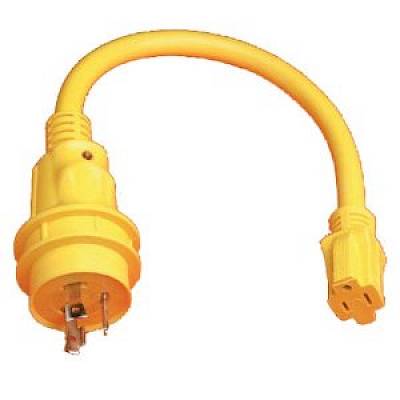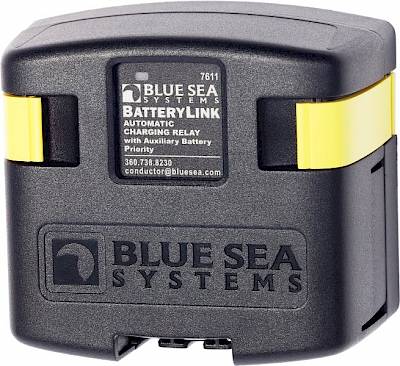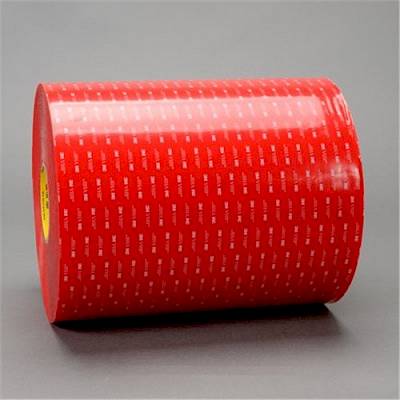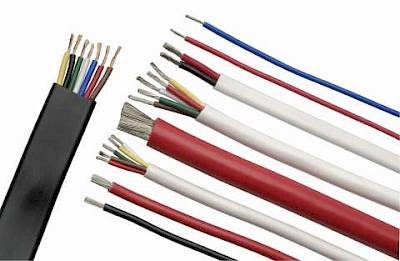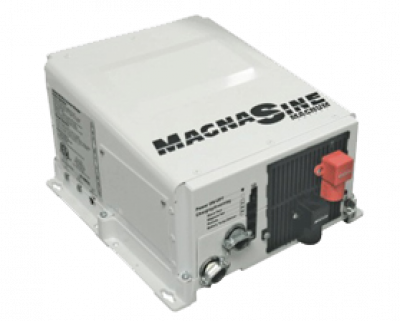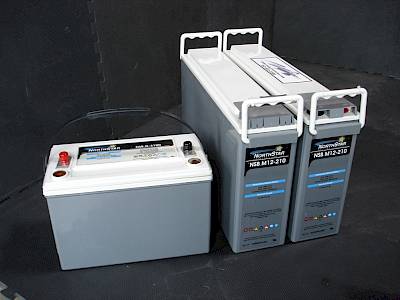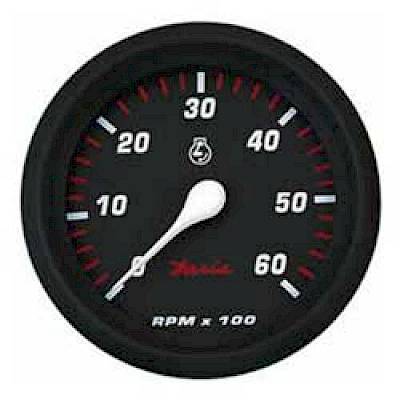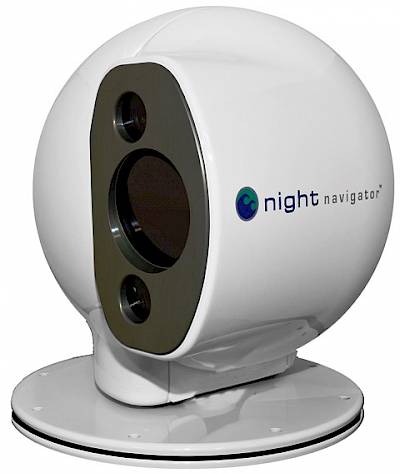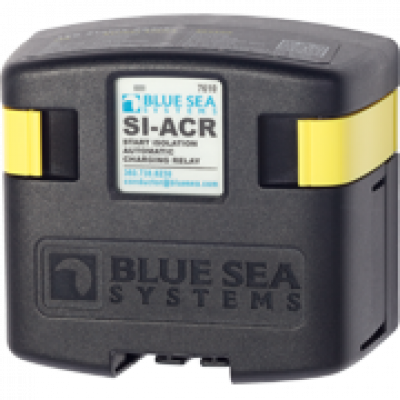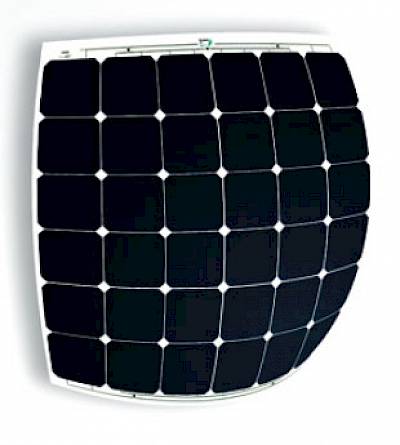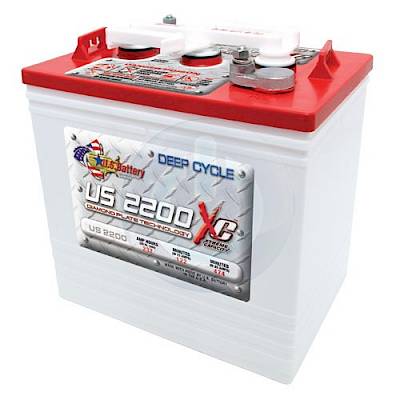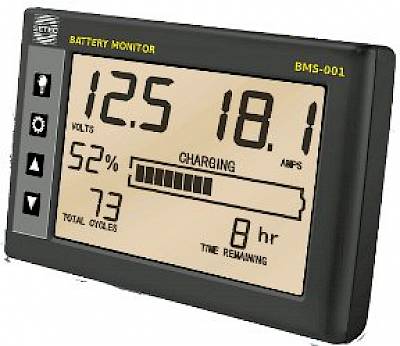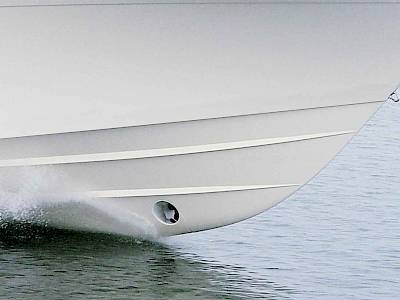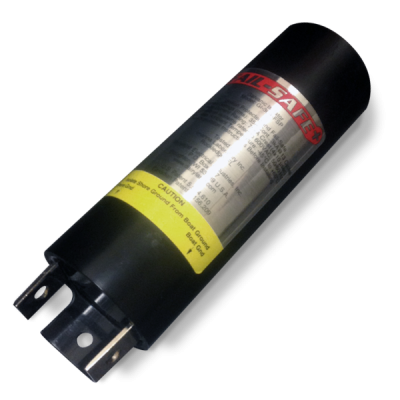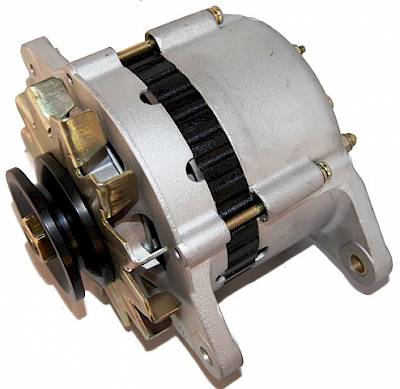Boat Show 2018 - DIY Marine Electrical Connections
Transcript is auto-generated.
properly especially with a crimp do it once and not have to revisit again and that way to do that and we're gonna show is using heat-shrink connectors right that are insulated so that the wire is not exposed so it doesn't corrode and the connections are gonna last a really long time so what's your formula for success you know first of all you want to have proper marine wire right so that's tin wire not a solid strand wire and unfortunately some of you that have older boats from the 17 years 80s that didn't have an AC system that were retrofitted were retrofitted by a friend of the owner who charged him a amazing deal and use household wiring on the boat because you know that was the thing they had in their truck and so now the whole boat is wired with solid strand a sea wiring which is a big no-no because a boat vibrates a house does not vibrate the house the boat vibrates because of the engine and eventually you know you're gonna maybe have shear on a vibration and the wire is on and off I've seen that on some boats drives people crazy so you want marine wire you want to have proper terminals we'll talk about that some terminals come with heat shrink you want to have the right tool and then the right technique and the technique honestly can be learned over time like anything else like golf your first swing probably sucks but eventually it gets better so this is a an example of a grounding wire where the owner did a mid-air splice for the bolt that's a no-no another owner took a bunch of heat-shrink did a Octopussy in the middle there are six connectors but bought Heatran connectors but believe that the Heatran connectors did not need to be shrunk down to create a sin I mean it's in the name I mean it's not and you know it's not it doesn't it doesn't call it a waterproof connector now I could get it's waterproof you put it on swatter proof no it's called a heat shrink I mean it was too short it needed to be connector that needs to be applied heat to shrink so that it becomes watertight connector and believe it or not probably this is crazy over 60 70 percent of you that have boats that have that work done on it the technicians that do the work can be bothered and will charge you for an expensive connector that is useless unless it's applied heat to be watertight so this is actually all too common you're gonna do that then you should definitely go on a Lord Coe and buy the cheapest connector because then that makes sense all right you're not you're not gonna follow through then go dirt cheap and then you'll be happy so one thing I want to emphasize with marine wiring when you choose the cable I've seen a lot of people say Jeff you know what I really value money and so for me what I do is I buy everything random you know I don't believe in standards I think it's a waste of time I have a great memory and I will remember what red is everywhere so for me I'm always context driven and red here is positive red here is black and I will remember and I'm that's that's yeah this is type of guy I am and that's what I bring to the table I just remember everything and I don't need to be told what a wire is because I put it in and I buy one spool of wire for the whole boat and I'm not joking by the way this is actually a common occurrence with do-it-yourselfers comment you got to be very careful right and so then they wire the whole boat with red what happens is eventually people actually believe it or not do forget things not everyone remembers everything about everything at all times and the very opposite of happiness is a negative wire going on a positive terminal so they're literally playing with fire and it's simply just a switch right and if you have two red wires going to a device and sometimes they're gonna say oh I heat shrink them both black but I put a red electrical tape on one end to show that that's a real red and the other one's a black red but you know that because there's no red electrical tape on it see I figured it out I mean I got this like this is I can't believe that they invented different color wires I mean what are they thinking this is a stupid waste of money electrical tape electrical tape falls believe it or not it's actually I tell it all the time in electricians where the great electrical tape should not be called electrical tape it should never be used as a temporary measure it's it's for maybe marking but I hate electrical tape it's something you put on and you take off you're not expecting the whole so when you're gonna be doing wiring your boat please follow a standard yellow for DC negative red for positive don't use AC wiring for DC whine I've seen that one of my technicians almost died they wired the charger with AC wiring both on the in and the outs so the DC out was AC wiring the DC or the ACN was obviously and he changed the charger this owner so he wired the whole charger both the DC side and the AC side with AC wire change the charger and forgot which one was which so he connected AC to the DC output the charger blue did it again charger blue did it again charger blue now at this point this individual realized that what are the chances that three charges are defective he was probably really upset at this point right first charger crap second what the hell third one hmm wonder one of the odds 649 here I'm feeling lucky calls us in and this is a thank God my top guy thank God honestly if it would have happened to me I think I would have died this guy's mr. safety if you touch a charger and you look at DC connections I can touch a battery 12 volts benign there's not enough voltage area to electrocute you nothing's gonna happen so if you touch a charger you look at the DC Circuit you're like DC Circuit you know you know protection you don't worry about anything you're just gonna simply put a multimeter on the output of the charger there's never gonna be 120 volts on the output of a charger who would think why would they be 120 volts on the output of a charger well I'm a charger there was because the owner had inverted the leads had forgotten his trick and so luckily my technician took the time to actually measure the voltage of the leads before touching them because if he would have touched those leads like I probably would have done you touch it and you'd actually would have electrocuted yourself with 120 volt AC which is pretty serious and by the way on that boat there was no breakers because why bother right I mean seat belts are not really useful until you need one no breakers and it was a 30 amp breaker on the shore that would have tripled so yeah there's 30 amps on that circuit and so that's the reason why when you're gonna be doing wiring your boat you need to follow the code because your 1d gonna forget your tricks or you're gonna have someone else is gonna come on board that's not gonna know your tricks and that's why we all drive on one side of the road because my Road I can go in Reverse in the opposite side of the road if I wanted to all roads lead back to home you could drive it in Reverse but everyone expects you to drive forward and on one side of the road and so that's the reason why there's a standard so everyone just comes on the boat they know where they're seeing they're like okay hit the ground running if everyone had to figure out what's on a boat it gets really time-consuming and that's where the technician spends a lot of time a reverse designing everything and then that's costing you the clock right because that person has to think as opposed to just hit the ground running the other features are really important there - is that a marine grade wiring is actually I've got a jacket that's insulated so that when orel touches the jacket it's not gonna melt welding cable does not do that so you can actually have diesel fuel leaked onto a welding cable and believe it or not the welding cable jacket will actually disintegrate and completely disappear it will melt away I've seen a boat where two welding wires were about this close underneath a fuel filter diesel fuel filters and a drip the there was no more jacket no more insulation on - positive and a negative wire that we're running parallel to one another directly connected to a battery going to a starter those two wires would touch there's bobbya there is a switch but there's no fuse the boat would have been gone there's no amount of fire extinguisher that can put a dead short between an ad I don't care how big the fire department's fire hoses that is a volcano on your boat there's no amount of extinguishing you can't do anything this is like it's it's happening and that was because of a simple diesel leak under a fuel filter that was not properly tied and dripping on two wires that were properly and thank God the wires some older boats remember they used to wire them with clamps and they run them not in bundles but one on top of another really neatly so that was that boat you know they perfect that at least the technician took the time to run it one at a time and so there was a little bit of sag but that sag did not allow the two cables to touch in today's boat most cable bundles are run together you know you'll have a bunch of cables running together so imagine you have a drip or you have an oral leak in your engine room the cable disintegrates the two cables short and then you lose your boat this is an example of someone who that believes that yes they can this is a gauge 8 wire 6 I think in a gauge 10 lug you see the wire it's yellow it goes 1012 that cable is much bigger what they did and this is intentional they cut all the strands off the wires you can see them all cut off off the side solid strand wire that's not marine water by the way every single strand is cut and they got three strands into their lug so that would be the opposite of a good connection and so also make sure that when you choose a connector on your boat and I do this for some owners I had a boat owner that's took off for France like bought a catamaran got it there and he was like okay I'm gonna do work on my boat what should I do I said well you should have a little connector kit you know a little bit of everything so that when you do a crimp on your boat you have the right crimp for the right job right and we've done that for a lot of boaters and you have you know a ring connector for the right hole size you have Spade butt connectors you know right cable site everything is there so that when you open you a little kit you got the right connector and so you don't do what this fellow did which was probably you know this by the way look at the breaker this is 20 amp breaker right 20 amp going on three strands of metal wire that person had no connectors on board probably had one at the bottom of some drawer and he's like well I gotta make this work so I'm gonna find a way and the owner that was in the owner that I met this was on the boat like that after had been sold luckily it's not a circuit that had to be used often this is an example of some AC circuits that melted this is a neutral jumper that was a bad crimp on a boat this is another example of and this is what's so scary is that both of those are bad crimps on AC breakers sometimes the heat is so intense and I've seen this and I had an owner on a 65-foot er he says he was a physician he says I can't smell it but my wife's pretty certain that there's a fire on the boat wintertime which is the worst time for fires on the boat that's why fires catch on fire and the wintertime as this AC loads right we have heaters running on the boat it was around the Boat Show actually the owner cause he's like yeah I can't smell it but she can smell it and it's it's kind of in the main cabin am i near the electrical panel yeah I like oh my god I'm like it's January so you know big boat a lot of shore power coming in the running heaters to warm up the boat right tell him that disconnecting the boat from shore power and sure enough the breaker that the line was connected on it was a bad brand new boat bad crimp my new bonus I mean two million dollar boat it happens right it not only had completely melted the wire the wire was like it looked like it went through like hailing back but it actually melted the breaker that was connected to melted the other two breakers there was connected to like when I mean melted I mean like like a molten like state so wait actually and these were double pole breakers like it was actually you know pretty good boat so both the hot and the neutral were on circuit breakers so this is like one breaker bad connection when three breakers on each side and that's the amount of heat that was generated by a bad crimp on an AC shore power connection coming in and feeding a panel and it was for the AC side so that is actually believe it or not that not that uncommon look at that cable I mean it almost looks like some sort of fuse so when you're going to be wine and doing connections on your boat there's different tools we've got here some too that I like some tools that's a personal preference everyone you know all the pros are gonna have like a different one I like our wire stripper versus the anchor thing I think Eric would you like the why stripper or the little gun yeah that's what I believe this is in my opinion this is a gadget on the right it looks cool it looks fancy but a wire stripper is a wire stripper and you need a way to cut a wire - so it's wire cutter for smaller cable size or wire size really useful and then we brought both of those tools and you'll see it up front because after this we're gonna show you Eric is going to show you how to do proper crimps there's double crimp ratchet tools for nylon insulators right like a standard non heat shrink connector so both the barrel and the night on is actually a good crimp on the jacket and on the wire itself with thin or a single crimp ratchet tool which is really good for insulated connectors and that's what we're gonna be demonstrating today because that's the ones we use in our shop for all connections on a boat we always use Heatran connections on every single thing that we do takes longer but once we do it once you'll never do it again well never maybe fifteen hundred years but not in our real life times so those two things and before eric gets started see you've got a choice are you gonna do nylon or heat shrink the next big thing is and this is where you need to be critical right about oneself and especially you it's the right amount of jacket that you need to remove you never want to remove too little that's that and that's probably worse than too much but too little means that when you put the wire inside the terminal you never want to ever have that insulation jacket of that wire to go under the barrel of the crimp you always want to see the seam you want to see some metal and the reason you do that is so you want to know for sure that you're crimping your connector or your terminal onto the wire and not onto the jacket of the wire right so you always want to see a little bit of this seam so you don't want to go through and push your wire all the way in and say oh it must be good then do your crimp you might be actually crimping your terminal on the outside on the jacket and the jacket is an insulator it's not going to be a good connection he'll show that you also want to make sure that strands you give a little bit of a twist so you don't want to have strands popping out on some connectors what's happening now is the jacket is ever so much smaller and you don't want to have strands actually coming out of the terminal because then the next term will be cited is maybe not a negative or positive which would just create like weirdness like a breakers off but the other ones on and you're like why am i having when one breakers on the other one comes on automatically but sometimes you have positive and negative wires that are right side in one another and if you have a metal strand that touches a positive you're gonna have a dead short choosing the right tool for the right terminal and then really what's really important and you'll see that there's a lot of videos online as well and you've got this pool test right don't be scared of actually testing your connection and if you literally can yank it apart you simply have to cut that well redo the CREM that connector is done it's been modified you can't make it open again and put it again that one you just throw away and you start over and just before we let Eric go I just want to emphasize one last point I have never in 11 years that I've done my business I have never ever ever seen someone who's done good workmanship like that where the work itself was shoddy someone who's a perfectionist who takes time to do neat work generally knows what they're doing someone who's rough and just makes a rat's nest might do good work it's possible there are messy people in electrical that do good work it is possible although untroubled possible but I'm probable and now the opposite which thank God and this is a good way for any layman to look at workmanship Electrical workmanship on your boat and be able to tell that if it looks neat it looks good it probably is good and if it looks bad unfortunately there's a high likelihood that it is bad so it's simply with visual you can at a glance you know when I come in a boat within five minutes I know if this is gonna be a really sad conversation for an order I don't even test the connections I didn't assess I just know just simply and a good electrician cares about the details and the details matter through and through they don't just make a good crimp they care about everything their fists Aegis about every single detail and that's why it looks like that so on your own boat if you're wondering where should I start there's gonna be a lot of stuff that your builder did that you probably don't have to worry about there's no bad builder really people say bad things about builders but builders have liabilities they care about electrical they do they have to is it would go out of business what you need to worry about is a layers of work that happened after your boat was sold by do-it-yourself owners that are MacGyver's because there's good work do-it-yourself work out there there's great do-it-yourself work or so-called professional shops that just get it done and they give you the bill you want to have and what they do is they don't tell you what corners they have to cut to give you what the bill you want to have and that's how you look you just open your DC panel you're like yeah it looks good you look you open your electronics family like oh my god that's generally something to happen later you're like you know if I'm gonna start somewhere this is probably the place where I'm gonna start understanding it redoing my connections because maybe you love your boat and you're gonna keep it for a long horizon and you just want to have a reliable safe boat so that's how you tell about gauging or assessing where connections you're gonna do on your boat because you can't read you in them all you've got to do with the ones that are the most potentially problematic connections so with that what I'm gonna do is I'm gonna pass on to Eric and if you guys want to gather around Eric and we're gonna give him the mic and he's to show you guys how to do a proper real connection we always use the heat-shrink connectors just to help against corrosion and yeah sort of extend the life of your connections stripping I can do it fairly well and no I'm not damaging the cables by going like this but someone that hasn't done it before if I push them too tight pull out you'll get some of the calls coming off see the little strands and that's obviously affecting the cable and you're degrading the rating of it that it's meant to carry yes so there's many different types of strippers but this is the one we have here today so it's 14 gauge cable so just put it in the 14 gauge then crimp down and there won't damage any of the cores inside and you can get at the correct distance that you need to put inside the crimp gun and them with the connectors yellow is 10 and 12 gauge blue is 14 and 16 gauge and readers 18 to 22 gauge so you don't want to be putting 14 gauge cable into a 12 10 connector because the connections not going to be as it's designed for so I stripped out a little bit long there that I'll just cut it down so just a butt splice connector here wrap the strands around just so there's no strays so when you're pushing it in they don't sort of flare up and not get inside the actual tunnel of the connector there and these crimpers are color coded so Red's for that the small 18 to 22 blue is 14 and they correspond with with the crimps and yellow is 10 to 12 so do the 14 to 16 crimp it down this phone here is a single crimp you can also get another version of these crimpers that has double crimp which is ideal because then you have two points of connection give it a tug to make sure it's all connected quickly and then there's no point buying a heat shrink connector if you don't knock it down I've gone on to numerous boats where people have them but they don't have a gas torch or maybe too scared not knowing if there's vapors or something around do this evenly because otherwise you can scorch the cable and damage the actual sheathing and it would it'll go black and that's deteriorated the the cable surface goes into oil or get some kind of grease on it over time that may possibly affect the cable so now that's gonna pass that around might still be a little bit hot just yes no no no it's just you know it's like anything there's no end you know III know I wouldn't say it's an overkill but you're certainly gonna buy that at multiples what you charge for a nylon connector sideman one point you gotta ask yourself it's diminishing returns alright I think this is probably a good start that's too short of a wire it should be much longer that's because it's been cut and cut I mean the bilge pump wiring is generally about at least this long and you got to get it that's high as humanly possible and you're right it's essential with a bilge pump essential to use an absolute heat shrink connection and perfectly because having 12 volts going into your bilge with some metals are going to be underwater you can have 12 volts going to ground is pretty much your whole boat is grounded and so you can have then a circuit in your boat and your bilge so yeah a bilge pump wire absolutely has to be sealed and cannot be laying in the bilge with open connectors Nigel Calder has stories of that bilge pump float switch failing and causing a keel to drop the boat's got all chewed up so you cannot have a circuit in your boat in the bills in the water because I mean a lot of those water is gonna be underwater metals or they're pretty much all grounded so it's very very serious to have bilge wiring that is not sealed not properly heat shrunk so that there's no more moisture or water they could get into that to complete the circuit so if with the hatred connectors it also matters exactly what crimpy using these ones here basically a universal so I could use it on the 12 10 I can use it on the 16 18 I can use it on the red 18 to 22 but when I crimp down with this it actually penetrates through the heat shrink so the middle is exposed there so if it does get in that situation if it's for a bilge pump you've used a heat shrink connector but because it's the middle has actually basically made it null and void having heat shrink on it you may as well just have a straight middle criminal yeah so yeah make sure you don't use the wrong tool for the heat shrink insulation yes it will never break some of the crimpers there's such rough edges that he actually pierced and actually caused the heat shrink to actually be sliced open so this ratchet crimper is designed by FTZ we'll also make a lot of heat shrink connectors and it actually is kind of like they'll notice the edges are you know they're kind of round and smooth right they're not jagged straight edges and so it allows the crimp to be done without actually severing the heat shrink insulation yeah which those crimp is that type of crimpers do because here normally these are cheaper as well the the type obviously because it's not designed specifically for it people think I don't want to spend $30 on a crimper I'll get a $10 here so yeah these crimp is here it's got the color gauges they're again for the different size so this is the 1012 crimp it down it off yeah I clearly haven't used these sites yes yeah the problem is that we have to do a double crimp some of the barrels are shorter and it varies from manufacturer to manufacturer it's hard to do a double crank on those because sometimes the barrel slopes and it slides so it's really it's it's even true yeah so even though the price of some of these crimpers can be up to a hundred dollars depending how many crimps you need to do on your boat that would pay to get a bit of a good pair because if you you want to spend $20 and get a pair like this you're not really doing yourself any favors by trying to crimp heat-shrink connectors with something that's going to damage them as such over time this is one I have a my own boat and it is tricky to use but over time you get used to it and then it never never breaks the seal on your each ring so these this ankle one is designed for the specific angkor lugs as well these are if T's it but yeah you can get pretty much identical lugs of ease of ankle and they're designed for exactly that purpose coming now the lugs on those but thank you yeah thanks all right enjoy the rest of the show thanks Garrett that's right
How To: Marine Electrical Seminar
How To: Marine Electrical Seminar – Introduction - Episode 1
Electrical
2019 Boat Show Presentations
Boat Show 2019 - How To - Choosing & Installing An Inverter/Charger
Electrical
Related Content









